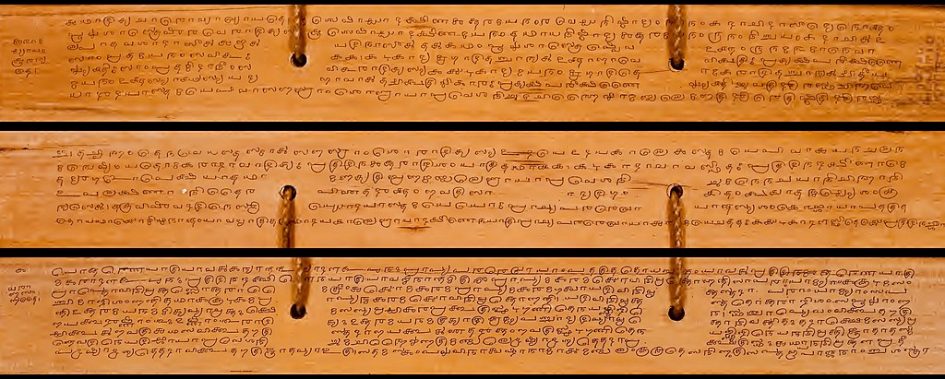Astrologers practising Indian/vedic astrology swear by the sidereal zodiac. Sidereal zodiac defines the 12 zodiac signs with respect to 27 nakshatras (constellation of stars) — for example, Ashvini, Bharani, and the first quarter of Krttika define Aries. Figure 1 illustrates the sidereal zodiac with their defining nakshatras. But, evidence has emerged that the saptarishis used tropical zodiac with sidereal nakshatras, which has already been discussed. Now, evidence in the form of palm manuscript clearly proves that the saptarishis used a tropical zodiac; but the earlier records of the tropical zodiac were altered/tampered with out of ignorance to suit the sidereal zodiac.
Table of Contents
In sidereal zodiac, the nakshatras are tied to the signs
By definition, in the sidereal zodiac, the nakshatras can only fall in their respective zodiac signs and can never fall elsewhere. For example, Ashvini can fall only in Aries, Rohini in Taurus, Ardra in Gemini, etc.
On the contrary, tropical zodiac does not restrain the nakshatras to any zodiac sign. The nakshatras constantly drift with respect to the signs due to the precession of the equinoxes. The position of the nakshatra wheel as defined by the sidereal zodiac occurred approximately 2000 years ago. But much water has flown down the Ganges and the nakshatras have drifted away.
Did the Saptarishis follow the sidereal zodiac?
The sages describing any nakshatra outside their sidereal location would completely negate the sidereal zodiac
The traditional Indian astrologers believe that our sages followed a sidereal zodiac. Therefore, these astrologers fix the nakshatras to their respective zodiac signs. On the contrary, if the sages had used a tropical zodiac, they should have described the nakshatras outside their sidereal locations. Therefore, the sages describing any nakshatra outside their sidereal location would completely negate the sidereal zodiac. In addition, this would conclusively prove that the saptarishis did not use the sidereal zodiac and that they used a tropical zodiac with sidereal nakshatras.
The evidence that the saptarishis used a tropical zodiac is found in Saptarishi Nadi.
Saptarishi Nadi
Saptarishi Nadi is a collection of books containing discussions of horoscopes by the seven sages (saptarishis) and the consort of Lord Siva, Devi Parvati, herself. It is written in poetic form in the Tamil language. These books were compiled from palm manuscripts found in various parts of Tamilnadu, India, and published by the Government Oriental Manuscripts Library, Madras. Most importantly, they are a treasure house for those who want to analyze the predictions of the horoscopes by the ancient sages. I have discussed at length about this collection in the Saptarishi Nadi section. I have compiled the portions where the saptarishis put forth their arguments in favor of/against some of their predictions in the form of an eBook titled, “Elucidation of astrological predictions by saptarishis: Saptarishi Nadi, Aries ascendant collection.”
Horoscope 45 – Aries collection
The sages describe the following planetary position in horoscope 45 of the Aries collection.
The moon is clearly in Taurus. The sidereal zodiac defines Taurus by the 2nd, 3rd, and 4th quarters (padam) of Krittika; all of Rohini; and the 1st and 2nd quarters of Mrigashirsha nakshatras. The placement of the Moon dictates the start of Vimshottari (nakshatra) dasa at birth. For example, if the Moon is in the Mrigashirsha nakshatra, the starting dasa will be Mars dasa. The total duration of Mars dasa is 7 years. As each nakshatra is divided into 4 quarters, 2 quarters of Mars dasa will last half the duration of the entire dasa period, i.e., 3 years and 6 months. If the Moon is within the first 2 quarters of the Mrigashirsha nakshatra, the remaining Mars dasa at birth will be more than 3 years and 6 months.
The sages describe Mars dasa at birth. We have seen that the first two quarters of Mrigashirsha nakshatra fall in Taurus. Indeed, the print version of the Saptarishi Nadi, as published by the Government Oriental Manuscripts Library, Madras, describes the nakshatra as Mrigashirsha 2nd quarter, and the remaining dasa period at birth is 3 years, 6 months, and 10 days. Obviously, this conforms to the sidereal zodiac.
Palm manuscript
Fortunately, I happened to study the original palm manuscripts; these are still being conserved in the Government Oriental Manuscripts Library, Madras. (Courtesy: Shree Yenbeeyes)
To my surprise, the nadi readers who copied the manuscripts had altered the original verse in the palm manuscript. But, one could easily make out the original writing. I have reproduced that particular portion of the palm manuscript below.
Manuscript evidence for tropical zodiac

The original verse reads thus:
மாரனும் செனிக்கும்காலம் மான்தலை மூன்றாம்பாதம்
ஆரலின் திசைமூன்றான்டும் அதினுடன் திங்கள்அந்தும்
தீரமாய் நாட்கள்பத்தும் செப்பினோம் பூர்வபாகம்
This verse unequivocally states that the nakshatra is Mrigashirsha 3rd quarter and the remaining period at birth is 3 years, 5 months, and 10 days of Mars dasa! The sages did not mention the 3rd quarter by mistake as they have calculated the corresponding dasa period accordingly. As stated earlier, if the Moon is within the first 2 quarters of the Mrigashirsha nakshatra, the remaining Mars dasa period will be more than 3 years and 6 months. In the original manuscript, the sages describe the remaining dasa at birth to be less than 3 years and 6 months, i.e., the Moon is beyond the 2nd quarter and is in the territory of the sidereal Gemini.
Certainly, this is completely out of the definition of the sidereal zodiac; the 3rd quarter of Mrigashirsha nakshatra falls in Gemini. But the sages definitely place the Moon in Taurus; they mention it in the first paragraph and again further down in the other verses. This unequivocally proves that saptarishis obviously did not follow the sidereal zodiac. Instead, they followed a tropical zodiac with sidereal nakshatras.
What else does this manuscript tell us?
This portion of the palm manuscript also brings into focus another aspect: the nadi readers of this millenium have tampered with/altered the original verses! I reproduce here my earlier statement in my previous article for the benefit of readers.
As those who copied the manuscripts over the past 2000 years were ignorant that our rishis used a tropical zodiac, the tropical mentions of the nakshatras would have made no sense to them; naturally, under the impression that the verses were corrupted, they would have deleted those references altogether, or worse, altered the nakshatras to match their sidereal counterparts or discarded the horoscopes. Indeed, nakshatra and dasa details are missing in some horoscopes, which would have been either by design or chance. Likewise, commentators would also have resorted to a similar sort of editing, unfortunately, under the mistaken notion that they are setting things right.
My suspicion that the nadi readers of yesteryear, out of ignorance, would have altered the nakshatras so that they conform to their definition of sidereal zodiac has turned out to be alarmingly true! Moreover, many such rounds of editing could have occurred in the umpteen instances of copying the manuscripts over the ages.
Summing it up
This palm manuscript proves that the Saptarishis definitely used a tropical zodiac and the nadi readers tried to alter it to make it conform to the sidereal zodiac. However, those who consider this manuscript evidence as an one-off aberration and therefore inadequate should realize that this evidence is in addition to those already mentioned in my previous article. Also, now that editing/altering of the palm manuscripts with respect to the nakshatras has been proved, even these few evidences, which have escaped editing, are more than adequate to establish that the saptarishis used a tropical zodiac with sidereal nakshatras.



March 23, 2022 at 1:30 am
Brilliant find, thank you for you writing this. How do you suppose astrologers using sidereal, like KN Rao, BV Raman, make accurate predictions then?
March 23, 2022 at 9:42 am
Irrespective of the accuracy of the system being used, some astrologers are blessed with intuitive predictions. Though various ayanamsas are used, they predict accurately. With God’s gift, one can make predictions even without using astrology. The question is, does the system work everytime for all the practitioners?